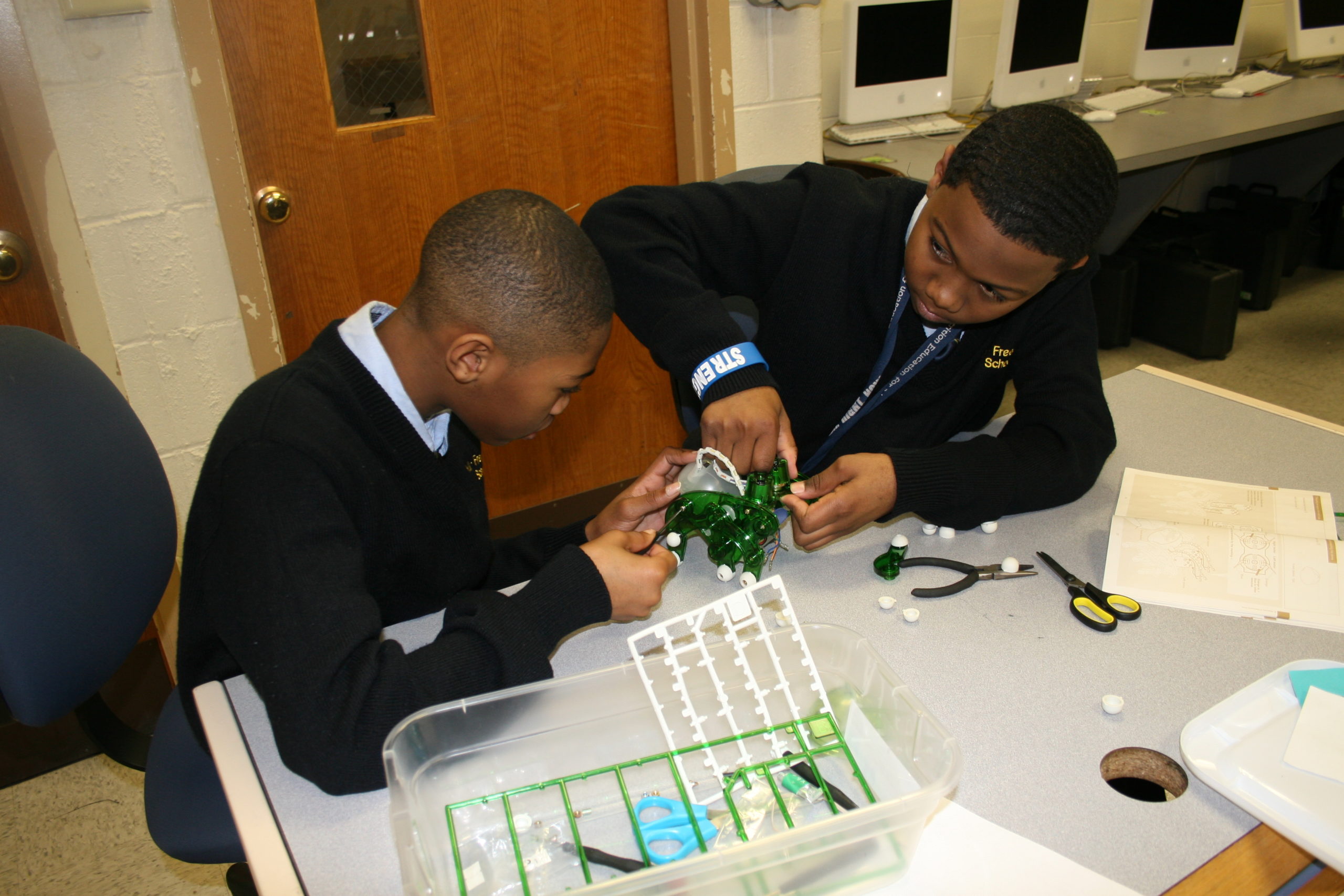In Ambra Hook‘s classroom at the Hill-Freedman Middle School in East Germantown, students become engineers. They research, design, build and test bridges, towers and robots.
It’s part of a STEM program that Hook, 60, developed for the school and launched last year, in response to a request from Hill-Freedman’s Principal Anthony Majewski. Earlier this week, FMC Corporation announced a $100,000 grant for STEM teacher development with a science demo in Hook’s classroom.
Hook, a Cheyney University graduate who lives in Downingtown, Pa., has been with the School District of Philadelphia for nearly three decades. She was previously the director of science education for the District, where she trained science teachers, wrote science curriculum and developed partnerships with local organizations.
We chatted with Hook about what her students are working on, the challenges of incorporating STEM into the classroom and her vision for STEM district-wide.
How does your STEM class fit into the Hill-Freedman School?
There’s a science class and a math class, but mine is computers, technology and engineering. We work on computer graphics, programming, building towers and bridges. It’s an elective [that every student has to take] and we meet twice a week. Out of 250 Hill-Freedman students, 200 students take my class. The only students that don’t take it are special education students.
So your class is in addition to science and math?
Yes. Everybody says “STEM,” everybody talks about “STEM” but we need the “T” and “E.” People say they have it, but they’re talking about math and science. Not every school has the technology and engineering.

What are your students working on right now?
Right now, my 7th graders are building towers. They had to do a lot of research, then they design their own tower, then they cut up Balsa wood and actually build it. When we come back from spring break we’re going to do experiments with the towers with buckets of sand to measure their strength.
What kinds of equipment do you use in your classroom?
I don’t have a lot of desktops in my room, but I have laptops. When we need them we pull them out, and when we don’t, we put them away. What I want my students to do eventually is to be able to design everything graphically on the laptop first [instead of just using pencil and paper]. We also have what I call the “genius pod,” where all the materials are kept. That’s where we keep our work benches, tabletop saws.
Can you talk about the vision for the STEM curriculum?
We’re not trying to make every student a scientist, but we want every student to be STEM literate because we need a workforce that is STEM literate. Yeah, we need science majors and Ph.D.s but we also need STEM workers for a modern world.
In this modern world, there’s an aspect of STEM no matter what career you pick. We want to make students aware of the STEM connection to all the possible careers.
We wanted to build something and hopefully, it’ll get replicated throughout the District.
What are some of the challenges you’ve seen with integrating STEM into the classroom?
Everybody understands the importance of STEM but the elephant in the room is, “Why is it so hard to implement it in the classroom?” We as a District can’t do it alone. We need the scientific community to help us. We need to help teachers feel more comfortable so they can enjoy teaching STEM. We need to help them be more confident.







